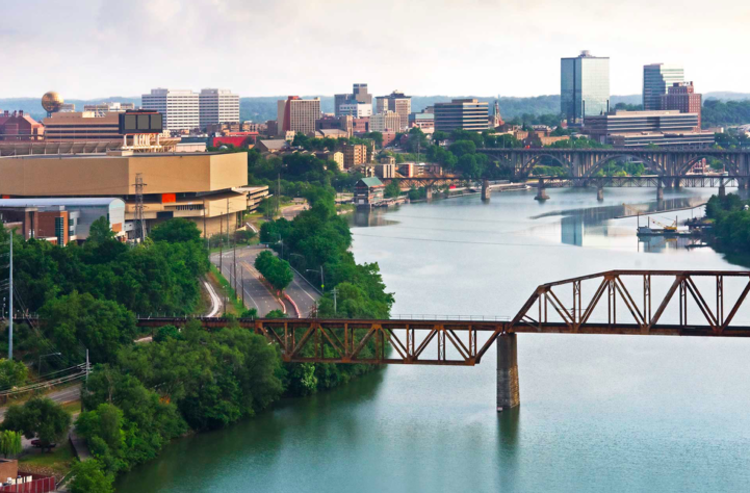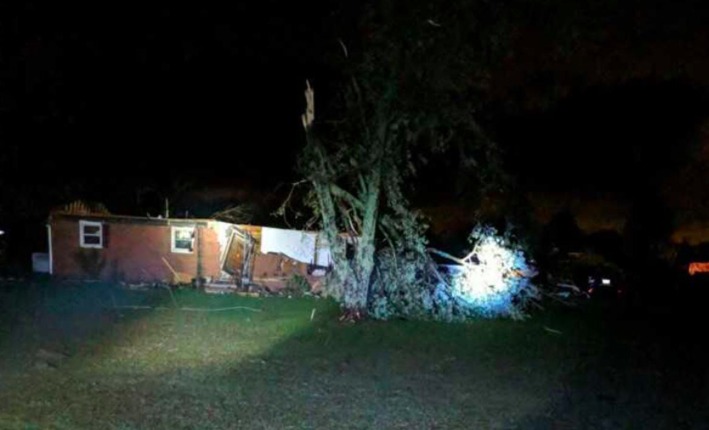East Tennessee Homes are Not Being Built the Way They Should Be
Most homes in East Tennessee are not being built for the volatile weather predicted for the state. Low-income families stand to lose the most.

In March 2011, Angie Ghorley could never have anticipated what was about to happen to her family’s home. As an EF3 tornado, with wind speeds between 136 to 165 mph, came through East Tennessee, roofs and walls were completely torn off well-constructed buildings, trees were uprooted, trains overturned, vehicles lifted off the ground.
“There was damage done to the roof, outside and inside had damage and the garage doors,” Ghorley said. “There were boards that pierced holes through my house and yard damage. My house was damaged from the debris from the house that was behind me. That house was a total loss.”

Photo Credit: Angie Ghorley
Photo Credit: Angie Ghorley
East Tennessee is known for its rolling hills and beautiful landscape that is very unique from the flatter middle and west Tennessee. The geography created by the Appalachian Mountains and valley to the west offer protection from dangerous natural disasters such as tornadoes, but it does not provide immunity. As fronts move across the plateau into the valley, the lower elevation warms the air, causing instability in the atmosphere which can cause severe weather. Because of this, East Tennessee is subject to intense flooding and severe weather during the spring and summer months. While East Tennessee is one of the safer places to live in the country, the lack of awareness of the damages of severe weather and lack of protection from it have caused as many problems as places where natural disasters are much more prevelant.
“I didn't buy or have a storm shelter put in on my property, however, a house around me that was very much damaged during the tornado decided to have one put in when they rebuilt their home," Ghorley said in an interview. "They are costly, which is why we just decided to have a safe spot in my home now.”
Tennessee is one of the poorest states in the country. Tennessee having a unpredictable climate is not the worst thing, but some houses have trouble even keeping up with the irregular climate itself. Building homes that can withstand normal heat and cold changes mainly in the south is something that should be focused on. These swings can sometimes spike up a utility bill which some families cannot afford. The shoddy construction that often happens in East Tennessee areas is okay until it isn’t.
This is a socio-economic problem that has been unsolved in East Tennessee. The things that could be put into houses, such as a storm shelter, to save lives and damage are costly. Families with low-income, this can be almost impossible to afford but is something that most people and families should consider when living in the East Tennessee area and the tornadoes that come through the area.
Sarah Usher from Maryville Tennessee is a part of a low-income family who shares her concerns with the building of homes in the East Tennessee area. “You know, I think most people do not care about the low-income families and their concerns for their homes. If someone who isn't in a low-income family household, they don't have to worry about a rise in the utility bill, or having to fix something that gets damaged,” Usher states.
When families buy homes, they are already spending thousands of dollars on the home itself. To add on to it to make it sustainable to extreme weather and/or daily temperature can be expensive which is why many low-income families cannot afford it. Threecubed is a research non-profit that conducts innovative and interdisciplinary social science research. Their goal is to be able to help the socio-economical problem of low-income families not being able to make their home sustainable to heat, cols, and all-weather types due to expenses.
The CEO of Threecubed, Dr. Bruce Tonn, explained more in depth the company and what their mission is for low-income families during these issues of weather for the East Tennessee area. “So, our main research area is estimating the non-energy impacts of weatherizing of low-income homes,” Tonn explains, “…tactics we use are installing instillation in the walls, ceilings, and floors, replacing or repairing crevices or air units, and much more.”
Building houses that are sustainable for areas such as East Tennessee weather and to make them energy efficient for low-income families is the true meaning behind Threecubed. In the East Tennessee area many families do not think of the consequences of weather until they have been affected, and many families do not have the money or resources to deal with the damages once they have happened.
Houses are completely open for damages when they are not prepared for extreme weather. There have been a huge number of houses damaged within a short time period. Building on to them or making sure they have the resources to make them substantial to most weather conditions would be beneficial for low-income families. Something to add into this issue of homes being built inefficiently is to make sure the well-built homes are accessible to all families, including low-income families. Making homes built for Tennessee’s volatile climate on top of the extreme weather is the big socio-economic need for the East Tennessee area.
“Being able to help in any way we can is our true main goal,” explains Tonn in an interview. Using Threecubed’s research in their technology of finding ways to build and support building homes for low-income families so that they insure safety of extreme weather is a good place to start. Ways to start progressing the change of the socio-economic problem can begin with the construction of the homes themselves to make these houses more affordable and sustainable for weather and families combined.

